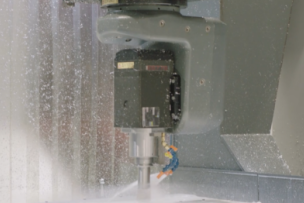Seco is one of the world’s largest providers of comprehensive metal cutting solutions for milling, stationary tools, holemaking and tooling systems. For over 80 years, we have been more than just a cutting tool provider. We develop and supply the technologies, processes and supports that manufacturers depend on to maximize productivity and profitability.
Saving weight is currently a huge challenge for the aerospace industry. Enhanced performance, reduced fuel consumption and lower emissions can offer manufacturers major advantages in a competitive market and the use of composite materials offers opportunities in all these areas.
After experiencing a slump for many years following 9/11 and the global recession, the global airline industry has been experiencing very strong growth in the last 3-4 years. But rising fuel prices, dull economic conditions and increasing competition are realities that are biting into the revenue-generating potential of the global airlines business today. One way for aircraft manufacturers to address these issues is weight saving which reduces both fuel consumption and the impact on the environment. This has led to a 50 percent increase in the use of composite materials in the latest generation of commercial aircrafts.
Composite materials are essentially a combination of two or more dissimilar materials that are used together in order to combine best properties, or impart a new set of characteristics that neither of the constituent materials could achieve on their own. The composite technologies are able to address a very wide range of issues, such as reducing the weight of existing metallic parts, avoiding corrosion, and designing out noise and vibration.
“Composite materials are important to the aerospace industry because they provide equal or greater structural strength comparable to metal components as well as lesser need for replacement,” says Scott Causey, Aerospace Specialist at Seco. ”These lighter weight components allow increased fuel efficiency and reduced repair cost and they offer the same or higher strength components with reduced weight.”
Composite materials typically found in aircrafts are carbon fiber, glass fiber and Kevlar (aramid) fiber in structural components, along with ceramic matrix composites which are typically used in brake components, combustion components, and exhaust components.
“Composites can typically reduce the overall structural weight by 20-50 percent which improves the fuel efficiency,” says Causey. “Composites also provide lower costs for assembling components because it requires very few fasteners, bolts etc. and in some cases consolidates multiple metal components into one composite component.”

.jpg?itok=clvY6OP5)





Talk to Us!
Leave a reply
Your email address will not be published. Required fields are marked *